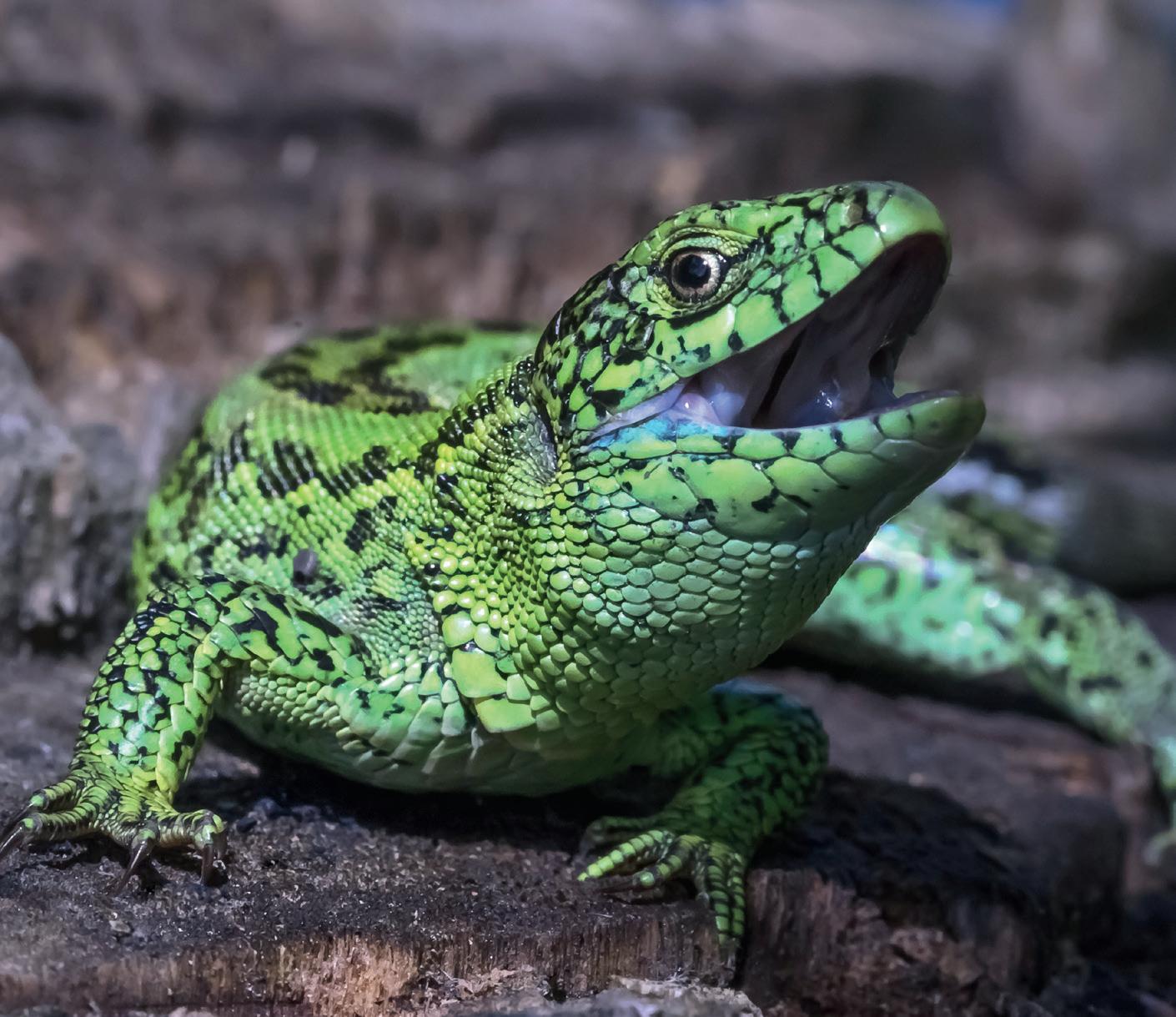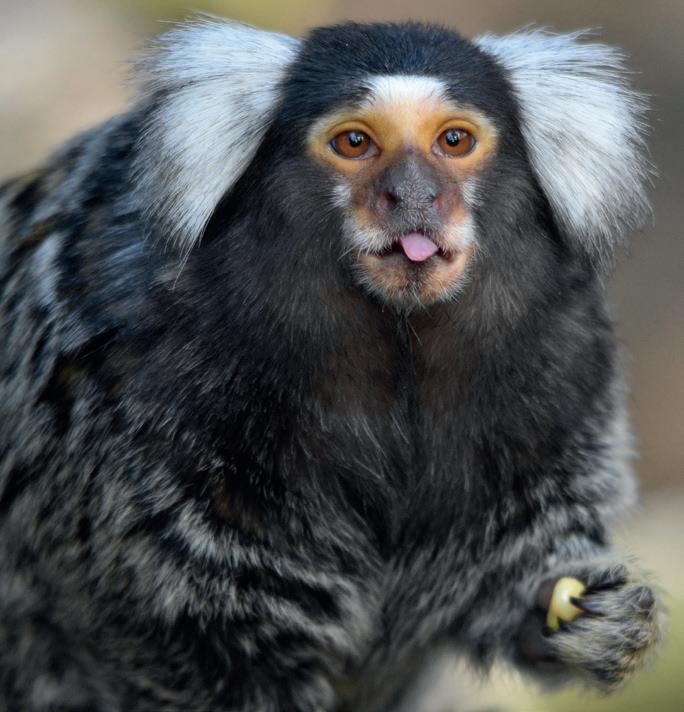
4 minute read
EXOTICS NEWS
The latest from the world of exotic pet keeping

Advertisement
UK Shark-Fin Ban
The United Kingdom has become the first European nation to ban the import of shark fins and any products containing them. The ban should come into effect by the end of 2021, marking a milestone in the fight against the legal shark fin trade. Britain’s Animal Welfare Minister Lord Goldsmith played a crucial role in passing the new legislation.
Exotic Pet Report
The RSPCA (England & Wales) have teamed up with the Born Free Foundation to “reveal the state of exotic pet ownership and trade within the UK” by publishing a report detailing their concerns. This partly stems from the recent television documentary about the private ownership of dangerous wild cats and other animals, and incorporates the recent debates on keeping primates in the private sector and the on-going concerns about keeping snakes in unsuitable containers.
Sand Lizard Release
140 captive-bred sand lizards have been released on Forestry England-owned land in Dorset by Marwell Wildlife (Marwell Zoo) and the New Forest Reptile Centre in partnership with Amphibian and Reptile Conservation (ARC). The lizards were bred at Marwell and at the New Forest Reptile Centre, and they join the previous 200 released in the same area last year. In fact Marwell have released over 2,200 captive-bred sand lizards in 33 years of working with this species at the park.
“Shark finning is indescribably cruel and causes thousands of sharks to die terrible deaths,” said Mr Goldsmith. “That is why we are now banning the import of both of detached shark fins and shark fin products. Our action will not only help boost shark numbers, it will send a clear message that we do not support an industry that is forcing many species to the brink of extinction.”
Zoo-Reared Hellbenders Released
This summer over 800 Ozark and Eastern hellbenders, raised from eggs at Saint Louis Zoo, were released into their native Missouri Ozark Rivers by the Missouri Department of Conservation, in cooperation with the U.S. Fish and Wildlife Service. Since 2008 an incredible 9,476 endangered hellbenders, raised at Saint Louis (8,599 Ozark and 877 Eastern) have been released in Missouri.
Keas Trained to Use Touch Screens
Researchers at Willowbank Wildlife Reserve in Christchurch, New Zealand have trained a group of kea to operate a touch screen with their tongues as part of new study into how they interpret virtual and real-world environments. They then presented them with a series of tasks that took place either fully in the real world, fully on-screen, or with a mixture of both. First, the kea saw a real ball placed onto a seesaw which tilted so the ball would roll into one of two real boxes. They correctly indicated which box they thought the ball was in by touching it with their beaks. They then performed the same task when all elements were replaced with virtual ones on a screen. Again they correctly indicated which box the ball was in.
The kea continued to select the box the ball was seemingly deposited into, which suggests they expected events on-screen to continue into the real world.
An author of the study, Patrick Wood, said training the birds to operate touchscreens was an interesting challenge. “A parrot’s beak is a lot like your fingernail: it won’t activate a touchscreen. So, we had to teach them to lick the screen with their tongues. Once they acquired this skill, they quickly gained confidence using the touchscreens and they really seem to enjoy it, too,” he said.
The researchers also presented the parrots with an additional experiment that pitted real and virtual objects against each other. This confirmed their findings were not due to simpler explanations, such as selecting the box tokens moved closest to, and that the birds showed no preference between real and virtual objects when they were directly compared against each other.
The findings are in contrast to a recent study which found 19-month-old human infants did not expect the real and virtual worlds to interact and therefore did not expect a virtual seesaw to deposit a virtual ball into one of two real boxes.
Lead author Amalia Bastos said “the findings open new possibilities for scientific investigations into kea behaviour and intelligence that could rely on this technology”.

“Our study validates the use of virtual reality and tasks blending the real and virtual worlds for use with this species. This potentially has implications for other parrot species as well,” she said. “However, further work is needed to determine whether kea with extensive experience of screens might begin to dissociate the real and virtual worlds, and what types of experiences might shift their understanding of screens closer to that of human infants.”
To test whether they expected physical events taking place in a virtual environment to be continuous with the real world, they were presented with a version of the task which had the same virtual animation of the seesaw as before, but it now appeared to deposit the ball into one of two real boxes placed in front of the screen.
The study, by the University of Auckland, shows the alpine parrot treats virtual and real-world environments as continuous and equivalent. (Source; www.nzherald.co.nz)
Fossilized Opal Insect
For the first time a fossilized insect has been found in a piece of opal on the island of Java in Indonesia. The stunningly preserved insect may be at least four to seven million years old.
Previously, plenty of ancient insects have been found in amber, a gemstone made of fossilized tree resin. When animals became encased in the fresh resin, it entombs them rapidly enough to preserve the remains, often with exquisite detail.
On a trip to Indonesia, gemologist Brian Berger purchased an opal that appeared to have an insect entombed inside. Insects trapped in amber are a common-enough sight, but in a slow-forming gemstone like opal it is incredibly rare. Berger had the stone analyzed by the Gemological Institute of America, which confirmed its authenticity.
Plants produce a sticky substance called resin mostly as a means to protect themselves. Under the right circumstances, the chemical structures of these resins can change over time, fossilizing into amber—occasionally trapping and preserving an insect inside.
This specimen probably started as a typical insect trapped in amber—but then it appears to have gone through a second process called opalization, where some of the amber turned into opal. Opals are essentially spheres of silicon dioxide with water combined into their chemistry. Organic specimens can turn into opal similar to the way fossilization turns bone into stone; paleontologists in Australia have recently found an opalized dinosaur fossil.










